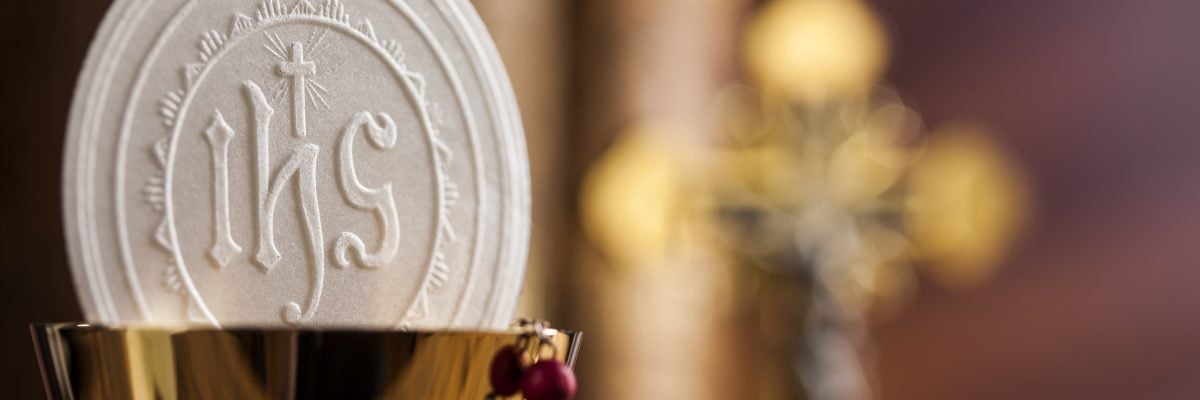
The claim is often made by “Jesus mythers” that the story of Christ and the liturgical practices of Christians are nothing more than rehashed ancient paganism. The writings of early Christian apologist Justin Martyr are often quoted by mythicists to illustrate how Christians were aware of these parallels and did their best to defend themselves from pagan objetions.
In particular, mythers use one quote from Justin to prove that early Christians plagiarized their liturgical celebration from the Roman mystery religion of Mithra. In this blog post, we’ll look at what Justin Martyr had to say and evaluate whether or not this claim carries any weight.
Who Was Justin Martyr?
Justin Martyr was an early Christian apologist whose writings date from around A.D. 150. He was a convert to Christianity, and from his writings we know he was educated in the pagan philosophies of his time.
In Justin’s day, Christianity was a persecuted religion, and as an apologist for the Faith, he wrote letters to the emperor and others to argue against this persecution and the reasons behind it.
What is Mithra?
Mithra, or Mithraism, is a Roman mystery religion that was practiced at its peak in the second and third centuries A.D. It is believed by some that the Roman cult was based on the ancient Persian sun-god Mithra, thus predating Christianity. This assumption begins with twentieth-century Belgian archaeologist and historian Franz Cumont.
While Cumont’s work is regarded as pioneering in the field, more recent scholars have challenged his assumption. According to John Hinnells at the First International Congress of Mithraic Studies, held in 1971, “[W]e must now conclude that [Cumont’s] reconstruction simply will not stand. It receives no support from the Iranian material and is in fact in conflict with the ideas of that tradition as they are represented in the extant texts. Above all, it is a theoretical reconstruction which does not accord with the actual Roman iconography.”
In other words; The only obvious connection between the Mithra of the Persians and the Mithra of the later Romans is the name.
The Mythicist’s Favorite Quote to Beat the Church With
In his First Apology, St. Justin describes the Christian celebration of the Eucharist for his pagan audience. Take special note of the sentence in bold:
For not as common bread and common drink do we receive these; but in like manner as Jesus Christ our Saviour, having been made flesh by the Word of God, had both flesh and blood for our salvation, so likewise have we been taught that the food which is blessed by the prayer of His word, and from which our blood and flesh by transmutation are nourished, is the flesh and blood of that Jesus who was made flesh. For the apostles, in the memoirs composed by them, which are called Gospels, have thus delivered unto us what was enjoined upon them; that Jesus took bread, and when He had given thanks, said, “This do in remembrance of Me, this is My body;” and that, after the same manner, having taken the cup and given thanks, He said, “This is My blood;” and gave it to them alone. Which the wicked devils have imitated in the mysteries of Mithras, commanding the same thing to be done. For, that bread and a cup of water are placed with certain incantations in the mystic rites of one who is being initiated, you either know or can learn.
The claim made by mythers is that Justin is admitting to a parallel with the ancient Roman cult of Mithra. To assume that the Christians borrowed this ritual from an earlier pagan cult requires one to hold to the assumption of Franz Cumont—that the Mithraic ritual predates the Christian practice. But as I have already pointed out, many modern scholars are quick to downplay the idea that the practices of the Romans were anything like those of the earlier Persian religion.
We have first century evidence in the writings of St. Paul that the Christians were already celebrating the Eucharist in their liturgies (cf. 1 Cor. 10:16, 1 Cor. 11:27-29). As the Catechism explains, the Christian liturgy using bread and wine has always been understood as having to do with the Jewish Passover:
In the Old Covenant bread and wine were offered in sacrifice among the first fruits of the earth as a sign of grateful acknowledgment to the Creator. But they also received a new significance in the context of the Exodus: the unleavened bread that Israel eats every year at Passover commemorates the haste of the departure that liberated them from Egypt; the remembrance of the manna in the desert will always recall to Israel that it lives by the bread of the Word of God; their daily bread is the fruit of the promised land, the pledge of God’s faithfulness to his promises. The “cup of blessing” at the end of the Jewish Passover meal adds to the festive joy of wine an eschatological dimension: the messianic expectation of the rebuilding of Jerusalem. When Jesus instituted the Eucharist, he gave a new and definitive meaning to the blessing of the bread and the cup (1334).
Ritual Meals in Ancient Religions
It was not uncommon in ancient religious gatherings for the devotees to participate in a ritual meal as part of their worship. Commenting on the ritual practiced by the Mithraists, Professor Manfred Claus wrote in The Roman Cult of Mithras, “The ritual meal was probably simply a component of regular common meals. Such meals have always been an essential part of religious assembly: eating and drinking together creates community and renders visible the fact that those who partake are members of one and the same group.”
There is no evidence that the Christians borrowed from the Mithraists in their liturgy. Jesus modeled the Eucharist after the Jewish celebration of the Passover. It is likely that pagan mystery rituals were not even an after thought.
In addition to this, we must take Justin Martyr’s word at it when he describes the ritual of the Mithraists. There is no indication in any of Justin’s writings that he was ever a Mithraist himself, so it’s likely that his information is second-hand. The archaeological evidence does not provide us much insight into the actual ritual meal, but according to Clauss, “Mithraists did not just receive bread and wine or water, as the literary sources seem to suggest, but were in addition served actual meals.”
The truth is, we know very little about this ancient mystery cult and its ritual practices. Some scholars claim that this is due to Christians’ vigorously suppressing any knowledge of these cults, but that leaves unexplained the rather large number of reliefs, statues, and places of worship that survived. What we don’t have is a written account of their actualy beliefs and practices.
I wrote an article forthe May/June 2013 issue of Catholic Answers Magazine that takes a closer look at the supposed parallels of Christianity and Mithraism. You can purchase the single issue by clicking here. Or you can take advantage of a great package deal we are offering for a limited time when you sign up for a subscription. Click here for more details.



